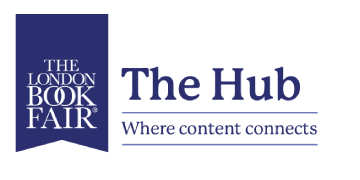Open access still prompting differences of opinion
Open access continues to be the biggest issue facing STM publishers. In mid-December, Springer Nature raised concerns in an open letter that the timeframes, metrics, and waivers required by Plan S could undermine the sustainability of scientific publishing and proposed its own alternatives – including flipping journals to full open access when their OA content reaches 90%, rather than the proposed 50%, and tying increases in open access publication to the funding made available for it. cOAlition S has responded by dismissing the publisher’s claims as ‘nothing more than an attempt to perpetuate the hybrid model’ and ‘a tactic to stall progress’, disputing its assertions using statistics from one of Springer’s own publications, Nature Communications. Meanwhile, the Publishers Association has issued an independent report, Evidence to inform a response to the UKRI review of Open Access policies, (PDF) insisting that publishers want to make the transition to Open Access (OA) a reality as comprehensively and rapidly as possible, and that they see transformative agreements as vital to this process, but also warning that transition to full open access cannot be achieved as quickly as Plan S suggests.
In the United States, the International Association of Scientific, Technical and Medical Publishers (STM), and the Association of American Publishers (AAP) have both responded with concern to suggestions that the Trump administration may be moving towards requiring all federally-funded research to be immediately made available through open access, claiming that changing the existing twelve-month embargo period would threaten investment in the research communication system and undermine American science, research, intellectual property, and global competitiveness. However, the Scholarly Publishing and Academic Resources Coalition (SPARC) welcomed the move, dismissing the embargo as unnecessary.
New transformative deals for Wiley and IOP
Wiley has concluded a three-year combined open access and subscription agreement with Bibsam, the consortium of 85 higher education and research institutions led by the National Library of Sweden. The deal will see 45 participating institutions retain access to Wiley’s subscription journals while their affiliated authors will be enabled to publish open access articles in Wiley’s hybrid and fully gold journals.
Jisc has agreed a transitional open access read-and-publish agreement with IOP Publishing which will give affiliated corresponding authors at participating universities unlimited open access publishing in 44 IOPP journals, with researchers also gaining reading access to 75 journals in the fields of physics, materials science, biosciences, astronomy and astrophysics, environmental sciences, mathematics and education.
Springer goes Dutch for sustainability
Springer Nature, which last month sold its publishing solutions provider Scientific Publishing Services to SPi Global, has announced a new partnership with The Association of Universities in the Netherlands (VSNU) and the Dutch Consortium of University Libraries and the National Library (UKB). The partnership, which builds on a read-and-publish deal established between Springer and VSNU in 2015, aims to explore the societal impact of open research and its ability to accelerate progress towards the United Nations Sustainable Development Goals. It involves three key projects: using natural language programming and machine learning to categorise the past decade’s scholarly output from the Netherlands alongside a subset of five of the development goals; assessing the impact on non-academic actors of outputs in a selection of those subsets; and, providing assistance with and assessment of researchers’ efforts to achieve societal relevance in their work. The first phase of data from the partnership has already been released, with further outputs expected throughout 2020.
Springer is also working with Digital Science’s Dimensions on its database of author affiliations and institutional relationships, Nature Index. The Dimensions team will take over the data management of the index, and will continue to make a 12-month window of data available at www.natureindex.com.
EMBO partners with ASAPbio on new pre-submission peer review platform
EMBO Press, the independent publishing platform of the European Molecular Biology Organization, has partnered with non-profit scientist-driven organisation ASAPbio (Accelerating Science and Publication in Biology) to create a new platform, Review Commons, which will peer-review life science research manuscripts ahead of journal submission. Papers submitted to Review Commons will be reviewed for scientific rigour and merit; paper and review can then be posted to the preprint server bioRxiv and submitted to one of the seventeen affiliated journals from six publishers which have committed to use these referee reports for their independent editorial decisions, with minimal additional expert input. The platform aims to reduce the 15 million hours of reviewer time estimated to be wasted each year on rejected papers.
New journals from Oxford and ACS
Oxford University Press has partnered with the Institute of Burn Research, Southwest Hospital, China, to publish Burns & Trauma, the open access official journal of the Chinese Burn Association and Asia-Pacific Society of Scar Medicine.
The American Chemical Society (ACS) is launching two new journals – ACS ES&T Water and ACS ES&T Engineering – to reflect the growing role of environmental science and technology in the chemistry field and daily life.
Altmetric issues top 100 science stories from 2019
Altmetric has announced its top hundred science stories for 2019, including climate change, politics, and – at number one – an AI that can create a ‘deepfake’ video of an individual from a single photograph.

Alastair Horne is a PhD student at the British Library and Bath Spa University.

